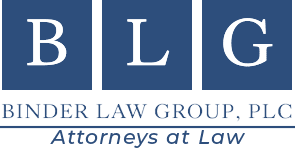Understanding Liability in Delivery Truck Accidents in San Bernardino Valley
Delivery truck accidents can have devastating consequences, not only for the drivers involved but also for other road users. In the San Bernardino Valley, a region characterized by its bustling commerce and heavy traffic, understanding liability in these incidents is crucial for victims seeking justice and compensation. This article delves into the common causes of delivery truck accidents, identifies who is typically responsible, outlines steps to take after an accident, explains how companies handle accident claims, and provides essential information for victims seeking compensation.
Common Causes of Delivery Truck Accidents
Delivery truck accidents can stem from various factors that often intertwine. Some of the most prevalent causes include:
-
Driver Fatigue: Long hours on the road can lead to fatigue, impairing a driver’s ability to react promptly and make sound judgments.
-
Distracted Driving: The use of mobile devices or engaging with onboard technology while driving can significantly increase the risk of accidents.
-
Poor Vehicle Maintenance: Trucks require regular maintenance to ensure they operate safely. Neglecting repairs or routine checks can result in mechanical failures that lead to crashes.
-
Adverse Weather Conditions: Rain, fog, or snow can create hazardous driving conditions that complicate navigation and increase stopping distances.
-
Improper Loading: Overloading or improperly securing cargo can affect a truck’s stability and handling capabilities, leading to rollovers or loss of control.
Understanding these causes is vital as it sets the stage for determining liability following an accident.
Who Is Typically Responsible?
Determining liability in delivery truck accidents involves assessing various parties’ roles. Potentially liable parties may include:
-
The Driver: If negligence on the part of the driver contributed to the accident—such as speeding or distracted driving—they may be held accountable.
-
The Trucking Company: Employers are often responsible for their employees’ actions during work hours. If a driver was acting within their employment scope when an accident occurred, the company could be liable under vicarious liability laws.
-
Vehicle Manufacturers: In cases where mechanical failure due to manufacturing defects leads to an accident, manufacturers may share responsibility.
-
Maintenance Providers: If a third-party service was responsible for maintaining the vehicle and failed to address known issues effectively, they could also face liability claims.
Understanding these potential liabilities is crucial for victims when pursuing compensation after an accident.
Steps to Take After an Accident
Experiencing a delivery truck accident can be overwhelming. However, taking specific steps immediately following an incident can help protect your rights:
-
Ensure Safety First: Move vehicles out of traffic if possible and check for injuries among all parties involved.
-
Call 911: Report the incident to law enforcement so they can document it officially; this report will be critical later on.
-
Gather Evidence: Collect contact information from witnesses and take photographs of vehicle damage, road conditions, and any relevant signage.
-
Avoid Admitting Fault: Be cautious about discussing fault at the scene; even statements made with good intentions might later be used against you.
-
Seek Medical Attention: Regardless of apparent injury severity, it’s essential to get evaluated by medical professionals soon after an accident.
These steps are instrumental in establishing a clear account of events that will aid in any future legal proceedings or insurance claims.
How Companies Handle Accident Claims
After an accident involving one of their trucks occurs, companies generally follow established protocols when handling claims:
-
Investigation Process: Most companies will initiate an internal investigation immediately after being notified about an incident involving their vehicle. This process includes reviewing driver logs, maintenance records, and eyewitness accounts.
-
Insurance Notification: The trucking company typically reports incidents to their insurance provider promptly so that claims processing begins without delay.
-
Claim Assessment: Insurance adjusters evaluate damages based on evidence collected during investigations—this includes assessing repair costs and medical expenses incurred by injured parties.
-
Negotiation Process: Often following assessments comes negotiation with affected parties regarding settlement amounts; this phase may involve back-and-forth discussions before reaching final agreements.
Understanding how companies navigate this process empowers victims by preparing them for what lies ahead should they pursue compensation through insurance channels or legal avenues.
What Victims Should Know About Seeking Compensation
For victims involved in delivery truck accidents within San Bernardino Valley seeking compensation entails several key considerations:
-
Types of Compensation Available: Victims may be entitled to various forms of compensation including medical expenses (both current and future), lost wages due to inability to work post-accident, pain and suffering damages resulting from physical injuries sustained during collisions as well as property damage reimbursements.
-
Statute of Limitations: California law imposes strict time limits on filing personal injury claims; typically three years from the date of injury occurrence must elapse before legal action becomes impossible—victims should act swiftly once they’ve stabilized post-crash.
-
Documentation Importance: Keeping thorough records—including medical bills related directly back injuries sustained during collisions—as well as documentation related directly back toward lost income serves as pivotal evidence supporting any claim pursued later downline either through negotiations with insurers themselves—or via litigation if necessary downline should attempts fail amicably beforehand too!
Navigating through recovery after experiencing such traumatic events remains challenging enough without added stressors surrounding financial burdens associated alongside them! Therefore being informed about potential pathways forward ensures individuals remain empowered throughout each step taken towards achieving rightful compensatory outcomes stemming forth from unfortunate circumstances faced head-on!
In summary understanding liability within context surrounding delivery truck accidents proves essential especially considering complexities inherent therein affecting multiple stakeholders alike! By arming oneself with knowledge regarding causes behind incidents occurring regularly across regions like San Bernardino Valley enables individuals better prepare themselves adequately responding appropriately whenever confronted situations arise unexpectedly thereafter!











